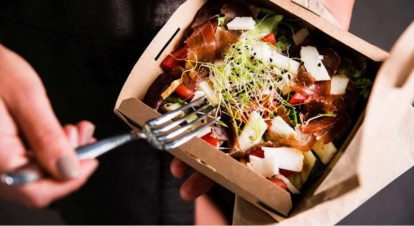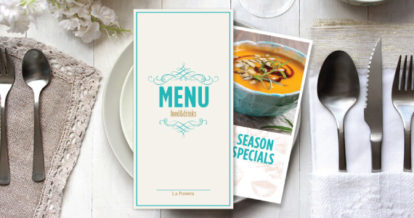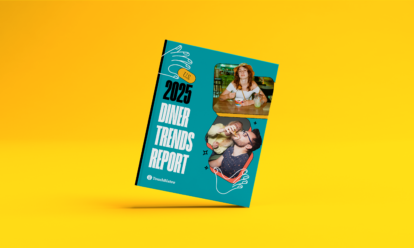Food delivery and online ordering systems are the epitome of convenience.
Which is why they’re quickly becoming two of the most popular restaurant trends today.
Let’s be honest. Nothing says “brilliant service” quite like ordering dinner (trouser-less) from the sofa.
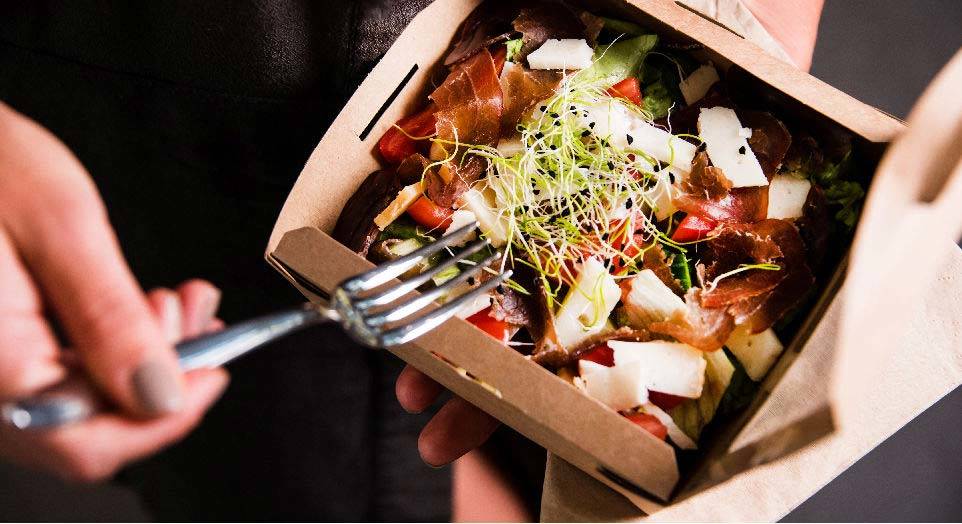
In fact, the food delivery revenue is expected to show an annual growth rate of 9% and a market volume of £4,178m by 2023.
That means big opportunity for business owners who jump on board.
In this article, we’ll arm you with all you need to know about food delivery and online ordering, including:
- What food delivery services are and what it entails
- The pros and cons of offering food delivery at your restaurant
- A two-step strategy to get the most out of this trend
These days, it’s vital to incorporate a system that integrates with your delivery apps. The dine-in, dine-out balance is a #1 priority – and we’re going to show you how to achieve it effortlessly.
What is a Food Delivery Service and What Does it Entail?
Retail delivery is a food courier service whereby a restaurant delivers food to a customer once they have placed an order through the phone, a restaurant website or a phone app.
Currently, there are two types of delivery services:
- Aggregators: operate as customer-business middle-men, requiring the restaurant to deliver the food.
- New delivery: takes control of the delivery process for the restaurants after the customer places an order.
The new-delivery service option has seen major traction in growth recently. These businesses attract more customers as they cover a wider range of restaurants who wouldn’t typically deliver.
This is how some of the most innovative delivery apps carved out their fame and fortune. We’re talking about:
- Deliveroo
- UberEats
- Hungry House
- Foodhub
Deliveroo and UberEats are the UK’s go-to takeaway apps. With over 8,000 UK restaurants served by Deliveroo and 7,000 by UberEats, hungry residents have found their last minute-meal saviours.
Pros and Cons
Pros: This trend has revealed an entirely new line of business for restaurants. With this free marketing opportunity comes major growth potential.
By partnering with a takeaway service company, you’ll be opening up the back door to a massive customer base. In fact, according to McKinsey, the addressable market for new delivery is believed to reach more than £17 billion by 2025.
All you need to focus on is how to navigate this influx strategically.
Cons: Within busier restaurants, this added demand means the kitchen is rushed off their feet. This not only negatively affects the staff, but the dine-in customers as well – especially when they see a Deliveroo or Uber Eats courier being served before they’re even seated.
The solution?
Understanding how to maintain good reviews from dine-in customers while adhering to trends of our time. To get ahead with dine-in customer satisfaction, consider brushing up on these recommendations:
- No matter how busy you are or how many takeaway orders are coming through, greet your diners as soon as they walk in the door. A designated hostess should do the trick.
- Listen attentively to your guests. Understand what they want. They put on pants and made the trip to experience dining in your venue. Go the extra mile for them.
- Equip your staff with a mobile EPOS system that instantly sends orders to the kitchen from their table. Paired with all the information your customers may need, this system eliminates costly trips to the kitchen for servers seeking allergy advice or sold-out item information.
A Two-Step Strategy to Milking the Food Delivery Trend
Takeaway courier companies have changed the way Brits eat, and with trends showing major growth, it doesn’t seem like it’ll be slowing down any time soon.
But as a restaurant owner, how can you cash in on this trend and ensure the process is as smooth as a freakshake for everyone involved, including your in-house diners?Here, we’ll guide you through this industry disruptor for the most profitable and sustainable results possible so that you can get back to focusing on what sets you apart from the competition: Your food.
1. Be Flexible and Scalable
If there’s one thing that restaurant owners are good at, it’s adapting to meet their customers’ needs.
However, customers these days want more than extra guacamole with their nachos.
According to TouchBistro’s Diner Trend Report, 45% of Gen Z are ordering takeout weekly or more often. They’re looking for chef-quality food in the comfort of their own home in the shortest amount of time – giving them maximum viewing time for Peaky Blinders.
While this is an exciting new opportunity for business growth, it can also be a source of stress for kitchen staff as they wrangle resources to fill the increasing demand.
But what can a restaurant owner do to adapt to this new norm?
Here are a few ideas to get you started:
Open Up a “Dark Kitchen”
It isn’t as grim as it sounds.
In fact, this idea can change your business as you know it.
A “dark kitchen” is a restaurant that exists solely to serve the food dine at home market. No chairs, tables, toilets, or customers dining in.
The popular burger chain MEATliquor recently opened its London branch with this empty, takeaway-catered layout: just a kitchen with doors opened towards a line of food delivery drivers.
However, this story isn’t just a one-off. According to BBC, this may be the future of takeaways.
By opening a dark kitchen, you’ll bring the traffic from new-delivery businesses away from your dine-in venue, keeping both processes smooth and successful.
Open a Street Kitchen
While this may seem like you’re reverting backwards, restaurants are opening Edition units (off-site, delivery-only kitchen) that are smaller and more economically feasible than a dark kitchen. Founder of Crust Bros Pizza Kitchen in London started his pizza shop by opening a street stall, which helped him test the concept before opening a brick and mortar site.
Not only does this save on costs and capitalise on the takeaway demand, but it gives restaurateurs a quick to market, an incubator to test their menu and concept.
Create a Delivery Menu
Many restaurants are creating delivery-specific menus to make work manageable for kitchen staff and to ensure the food travels well.
Nothing – and we mean nothing – is worse than a soggy sandwich and cold chips.
This is a quick and efficient fix that keeps staff and customers satisfied with your system.
Think: simplicity.
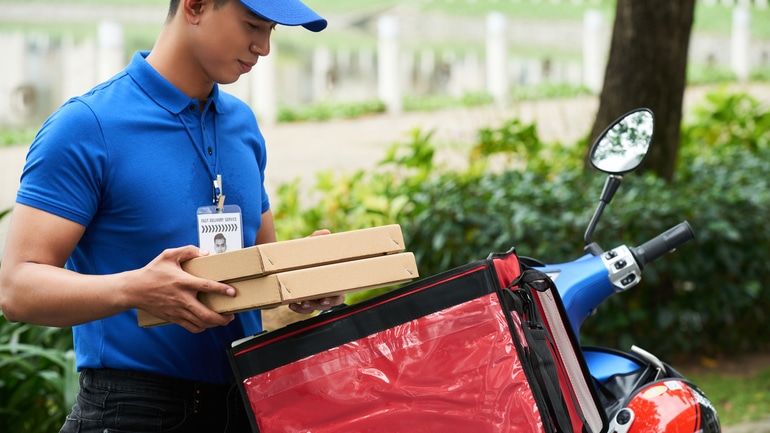
2. Become Tech-Savvy
It’s no wonder food delivery companies are popping up like avocado toast on a brunch menu – more than 2 million people have signed up to use UberEats alone over the past 18 months.
Using a delivery app multiple times a week is becoming as common as binge-watching Netflix.
It’s vital that restaurant owners understand how to use technology to their benefit and make this digital-based system convenient for customers behind the screens and staff behind the scenes.
By embracing technology, you’ll be able to access:
- Climate control systems
- Mobile payment apps
- Electronic stock control
- Online delivery service
Utilised correctly, restaurant technology can help improve efficiencies by focusing on how customers interact with their servers and environments like Wahaca and Starbucks – businesses that have introduced paying via apps.
Restaurant technology can also make purchases easier by implementing chatbots on your Facebook page so customers can get their Buddha bowl fix in between talking to friends. In terms of takeaway orders, EPOS system technology integrates with delivery apps and manages that crucial balance between dine-in and dine-out orders.
For inspiration, let’s look at The Rib Room Bar and Restaurant.
This London veteran restaurant has chosen to stay ahead of the times by embracing a tech-savvy approach to their vast wine collection.
By offering their customers a sleek iPad with their wine list and additional information, diners are able to make informed choices, becoming their own sommeliers.
While the use of tablets and iPads are still considered a disruptive technology in the restaurant industry, they’re becoming increasingly popular. The Rib Room is just one of many examples of how traditional restaurants are embracing this form of technology to fit their brand’s look and feel (while simultaneously reaping the many benefits that come with it.)
While this may seem like a far-fetched dream for your venue, sometimes it all starts with adopting takeaway services as the appetiser for your technology journey.
Strategies to Increase Restaurant Sales Through Takeaway: Summary
Now that we’ve delved into this strategy in detail, here’s a summary of what UK restaurants are currently implementing in order to adapt to this rising trend and ensure customer and staff satisfaction rise with your bottom line:
- Some restaurant chefs have partnered with delivery apps to develop purpose-built menus to avoid overwhelming their kitchen staff and delivering food that doesn’t travel well like chips or saucy bread.
- Other chefs have reserved a portion of their kitchen line for delivery food only. This only happens if the restaurant receives a serious amount of delivery orders, but can help maintain an organised system even when the orders are flying through your online ordering system.
- Some UK restaurants are limiting the time frames they allow deliveries. This empowers your kitchen to focus on dine-in customers at specific times and prepare for dine-out customers, no matter how many orders come through.
The Secret Ingredient to Food Delivery Success
We’ve all been there.
Sitting around the kitchen table with a group of mates, realising that everyone wants something different. One person is craving Thai while another two have that mad, pizza-desire look in their eyes.
On the other side of the equation, you have a restaurant with 25 online orders, a full house of dine-in guests and staff running around in circles.
The beautiful thing about takeaway and online ordering these days is that anything is possible, for both customers and business owners.
As we’ve seen, capitalising on these new food trends requires embracing technology.
It also requires the right tech-based delivery strategy to keep these two business lines running smoothly.
The secret ingredient to this almost effortless management strategy?
An EPOS system that integrates with delivery apps, leaving no metric or order behind.
How vital it is to balance your dine versus dine out and the only real way you can do that is with an EPOS that can manage both at once.
Sign up for our free weekly TouchBistro Newsletter

